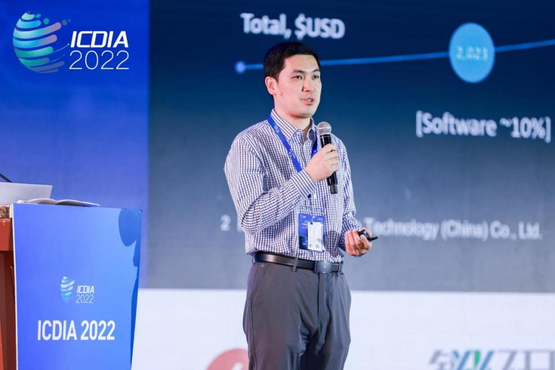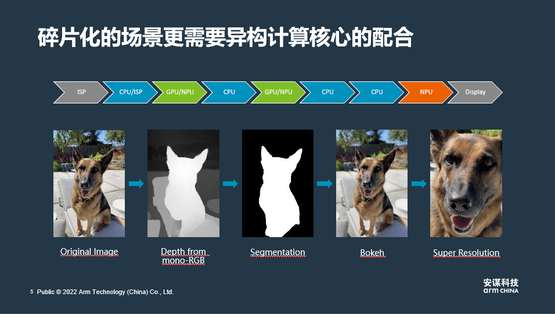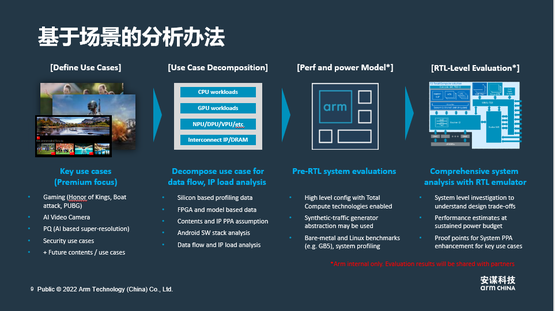On August 25, at the summit forum of the 2nd China Integrated Circuit Design Innovation Conference and IC Application Expo (ICDIA 2022) held in Wuxi, Liu Shu, head of product research and development of Amou Technology, said that with software-defined hardware becoming the future The development trend is that various scenario-based software increases the fragmentation and complexity of the system. The heterogeneous fusion computing platform composed of CPU, GPU, NPU, and ISP, VPU and other computing units will be able to Provide effective solutions to the differentiated needs of computing. On the basis of global ecology and local innovation, Arm Technology has built self-developed IP and Arm IP into an integrated, high-quality heterogeneous computing platform to help local industries continue to innovate.

In the era of software-defined hardware, heterogeneous computing solves complex scene problems
Rapidly developing technologies such as AI and 5G have brought great convenience and efficiency to our lives, with the accompanying increase in cost and software complexity. Taking a car as an example, the technical cost of a fuel vehicle is about $2,000, of which the software cost is about 10%; the technical cost of a hybrid car is about $15,000, of which the software cost is increased to 20%; and in L5 In the level of self-driving cars, the technology cost will reach nearly 40,000 US dollars, and the software part will account for as high as 50%. The increase in the proportion of technology costs and software costs means that the two are becoming more and more important and affect the design of the entire system and hardware. Similarly, the server market also shows the trend of software-defined hardware, such as software-defined computing, software-defined networking, and software-defined storage brought about by container technology, virtualization technology, and microservice technology. “The trend of software-defined hardware in the future will develop from the cloud to the edge, and then to the device side.” Liu Shu said.
With the trend of software-defined hardware, a variety of algorithms continue to emerge, and scenario-based software increases the fragmentation and complexity of the system. For example, in the application scenario of photo optimization, it is necessary to use RGB image depth matting, blur the background, and then perform super-resolution processing, and finally display a high-quality image that meets the requirements. Behind this processing process, the hardware aspect involves the coordination of CPU and ISP, the coordination of GPU and NPU, and even the coordination and cooperation of various heterogeneous computing in SoC.

When talking about how to deal with the fragmentation and diversification of the scene, Liu Shu said: “The fragmented scene requires the cooperation of heterogeneous computing cores, not only general computing units such as CPU and GPU, but also high-quality artificial intelligence. Processing unit NPU, video image processing unit VPU, ISP or other security processing functions. Through heterogeneous fusion and cooperative work between various computing units, the differentiated computing needs of complex scenarios can be met.”
Evaluate the real needs of the system and provide customers with designs that meet real application scenarios
In the face of increasingly complex and fragmented scenarios, how to meet hardware requirements? The answer is to evaluate the real needs of the system. Liu Shu pointed out that the general Benchmark cannot represent the needs of the real scene. Taking the automatic driving scene analysis as an example, it is obviously not accurate to judge the real performance requirements by the speed of a simple scene of a few cars running on a track, because the real urban traffic scene is very complex, and there are traffic instructions, There is a lot of interaction between people and various objects.

In order to evaluate the real needs of the system, Amou Technology proposes a scenario-based analysis method, which analyzes and extracts key scenarios that customers care about, such as games, codecs, and security, and differentiates the workload of CPU and GPU as well as NPU, VPU and other key scenarios. Workload of heterogeneous core units. Through the evaluation of the workload of each computing unit, the performance model and the power consumption model are obtained for further analysis, and the optimized system design is finally achieved through the analysis of bandwidth, power consumption and performance. “Liu Shu introduced.
“Through Total Compute’s analysis of system-level heterogeneity, combined with customer applications to analyze real requirements, system design and chip design solutions that meet real and complex scenarios can be defined.” Liu Shu pointed out that Arm-based development tools, analysis tools and With a strong software ecosystem, we provide customers with relevant drivers, software and analysis tools. We can also customize the basic units required for optimal PPA physical implementation for CPU and GPU through physical library products. “The Total Compute solution has received in-depth participation from many domestic partners. For example, through the analysis of Total Compute, the game development engine has achieved a 30% reduction in memory bandwidth, which improves performance, reduces power consumption, and saves chip costs. There is a great improvement.” Liu Shu said.
Build a multi-heterogeneous computing platform to help customers accelerate product development

According to Liu Shu, Arm’s self-developed IP and Arm products have formed a complete heterogeneous core computing matrix. In addition to general computing IPs such as Arm CPU and GPU, Arm’s “Zhouyi” NPU, “Xingchen” CPU, “Shanhai” SPU, “Linglong” ISP and VPU and other self-developed IP products are also indispensable in heterogeneous computing. Core. Liu Shu said: “Anmou Technology’s self-developed IP and Arm IP pursue an integrated and complete heterogeneous computing matrix. Under this matrix, each computing unit forms a complete platform through collaboration and complementarity. Technology will continue to focus on the research and development of heterogeneous computing products and provide customers with diversified solutions that meet the needs of actual scenarios.”
The data shows that since the establishment of Anmou Technology, there are more than 300 authorized partners in China, and the cumulative chip shipments have exceeded 25 billion pieces, which has promoted the development of the downstream technology industry with an annual output value of over one trillion yuan. Important contributions made by technology in the entire Arm ecosystem. “We hope to help the local chip industry through the Arm ecosystem, and welcome more partners to join the Arm ecosystem,” Liu Shu concluded.
This article is reproduced from: http://www.guokr.com/article/462065/
This site is for inclusion only, and the copyright belongs to the original author.